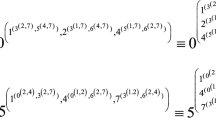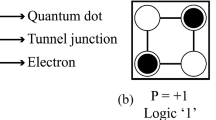Abstract
Single Event Transients are considerably more difficult to model, simulate and analyze than the closely-related Single Event Upsets. The work environment may cause a myriad of distinctive transient pulses in various cell types that are used in widely different configurations. We present practical methods to help characterizing the standard cell library using dedicated tools and results from radiation testing. Furthermore, we analyze the SET propagation in logic networks using a standard (reference) serial fault simulation approach and an accelerated fault simulation technique, taking in account both logic and temporal considerations. The accelerated method provides similar results as the reference approach while offering a considerable increase in the simulation speed. However, the simulation approach may not be feasible for large (multi-million cells) designs that could benefit from static analysis methods. We benchmark the results of a static, probabilistic approach against the reference and accelerated methods. Finally, we discuss the integration of the SET analysis in a complete Soft Error Rate analysis flow.










Similar content being viewed by others
References
Agostinelli S, Allison J, Amako K et al (2003) G4—a simulation toolkit. Nucl Instrum Methods Phys Res Sect A Accel Spectrom Detect Assoc Equip 506(3):250–303
Alexandrescu D (2007) Outils pour la simulation des fautes transitoires. PhD Thesis, Sept 24
Alexandrescu D, Anghel L, Nicolaidis M (2002) New methods for evaluating the impact of single event transients in VDSM ICs. In: Proceedings of the 17th IEEE International Symposium on Defect and Fault Tolerance in VLSI Systems, DFT 2002, pp 99–107
Asadi G, Tahoori MB (2005) An accurate SER estimation method based on propagation probability. Proceedings of Design, Automation and Test in Europe Conference
Belhaddad H, Perez R, Nicolaidis M, Gaillard R, Derbey M, Benistant F (2006) Circuit simulations of SEU and SET disruptions by means of an empirical model built thanks to a set of 3D mixed-mode device simulation responses. Proceedings of RADECS
Benso A et al. (2002) Static analysis of SEU effects on software applications. Proceedings of the International Test Conference, pp. 500–508
Binder D, Smith EC, Holman AB (1975) Satellite anomalies from galactic cosmic rays. IEEE Trans Nucl Sci 22(6):2675–2680
Bradley PD, Normand E (1998) Single event upsets in implantable cardioverter defibrillators. IEEE Tr N Sci 45(6):2929
Brglez F (1984) On testability analysis of combinational networks. Proceedings of IEEE Symposium on Circuits and Systems, pp. 221–225
Brown FB et al (2002) MCNP version 5. Trans Am Nucl Soc 87:273
Cannon EH et al. (2004) SRAM SER in 90, 130 and 180 nm Bulk and SOI Technologies. Proc. 42nd Int’l Reliability Physics Symp, p. 300
Cha H, Rudnick E, Choi G, Patel J, Iyer R (1993) A fast and accurate gate-level transient fault simulation environnement. Digest, 23th Int. Symp. Fault-Tolerant Computing, pp. 310–319
Chapman H, Landman E, Margalit-Ilovich A, Fang Y, Oates AS, Alexandrescu D, Lauzeral O (2010) A multi-partner soft error rate analysis of an infiniband host channel adapter. Proceedings of 2010 IEEE Workshop on Silicon Errors in Logic—System Effects (SELSE)
Dodd PE et al (2004) Production and Propagation of Single-Event Transient in High-Speed Digital Logic ICs. IEEE Trans Nucl Sci 51(6):3278–3284
Eaton P et al (2004) Single event transient pulsewidth measurements using a variable temporal latch technique. IEEE Trans Nucl Sci 51(6):3365–3369
Floating point adder and multiplier. revision 8, retrieved from http://opencores.org/project,fpuvhdl on May 14th, 2011
Gadlage MJ et al (2004) Single event transient pulsewidths in digital microcircuits. IEEE Tr N Sci 51(6):3285–3290
Guillaume H, Velazco R, Peronnard P. A generic platform for remote accelerated tests and high altitude SEU experiments on advanced ICs: Correlation with MUSCA SEP3 calculations. Proc. 2009 15th IEEE International On-Line Testing Symposium, p. 180
Hane M, Nakamura H, Tanaka K, Watanabe K, Tosaka Y, Ishikawa K, Kumashiro S, (2008) Synthetic soft error rate simulation considering neutron-induced single event transient from transistor to LSI-chip level. SISPAD 2008, 9–11, page(s): 365–368
Hass KJ (1999) Probabilistic estimates of upset caused by single event transients. 8th NASA Symposium on VLSI Design, p. 4.3.1–4.3.9
Hass KJ, Gambles JW (1999) Single event transients in deep submicron CMOS. IEEE 42nd Midwest Symp C&S 122–125
Hubert G, Palau J-M, Castellani-Coulie K, Calvet M-C, Fourtine S (2001) Detailed analysis of secondary ions’ effect for the calculation of neutron-induced SER in SRAMs. IEEE Trans Nucl Sci 48(6):1953–1959, part 1
Lambert D (2006) Analyse par simulation Monte Carlo de la sensibilité aux aléas logiques des mémoires SRAM soumises à un environnement protonique spatial ou neutronique terrestre. These, Université Montpellier II
Letaw JR, Normand E (1991) Guidelines for predicting single-event upsets in neutron environments. IEEE Trans Nucl Sci 38(1):1500–1506
Murley PC, Srinivasan GR (1996) Soft-error Monte Carlo modeling program. SEMM, IBM J R&D 40(1):109–118
Nakamura H, Tanaka K, Uemura T, Takeuchi K, Fukuda T, Kumashiro S (2010) Measurement of neutron-induced single event transient pulse width narrower than 100 ps. In: Proceedings of the 2010 IEEE International Reliability Physics Symposium (IRPS), pp 694–697
Nguyen HT, Yagil Y, Seifert N, Reitsma M (2005) Chip-level soft error estimation methods. IEEE Trans Device Mater Reliab 5(3):365–381
Nicolaidis M, Perez R (2003) Measuring the width of transient pulses induced by ionising radiation. Proceedings of IRPS, p. 56
Normand E (1996) Single event upset at ground level. IEEE Trans Nucl Sci 43(6)
Open cell library. retrieved from http://www.nangate.com/index.php?option=com_content&task=view&id=137&Itemid=137 on May 14th 2011
Perez R et al. (2006) Measurement of SET pulse width induced by ionizing radiations in CMOS combinational logic. RADECS Proceedings
Reorda MS, Violante M (2003) Accurate and efficient analysis of single event transients in VLSI Circuits. Proceedings of the 9th IEEE International On-Line Testing Symposium
Sanda PN (2005) The concern for soft errors is not overblown. Proceedings. ITC 2005. IEEE Int : 8–8
Tosaka Y et al (1999) Simulation technologies for cosmic ray neutron-induced soft errors: models and simulation systems. IEEE Trans Nucl Sci 46(3):774
Townsend LW, Miller TM, Gabriel TA (1972) HETC radiation transport code development for cosmic ray shielding applications in space. Nucl Sci Eng 49:110
Vial C et al (1998) A new approach for the prediction of the neutron-induced SEU rate. IEEE Trans Nucl Sci 45(6):2915
Wen S-J, Alexandrescu D, Perez R (2008) A systematical method of quantifying SEU Fit. IOLTS, pp.109–114, 2008 14th IEEE International On-Line Testing Symposium
Wrobel F, Palau J-M, Calvet M-C, Bersillon O, Duarte H (2001) Simulation of nucleon-induced nuclear reactions in a simplified SRAM structure: scaling effects on SEU and MBU cross sections. IEEE Trans Nucl Sci 48(6):1946–1952
Young PG, Arthur ED (1977) GNASH: A preequilibrium, statistical nuclear model code for calculation of cross sections and emission spectra. LANL Report LA-6947
Author information
Authors and Affiliations
Corresponding author
Additional information
Responsible Editor: M. Violante
Rights and permissions
About this article
Cite this article
Costenaro, E., Alexandrescu, D., Belhaddad, K. et al. A Practical Approach to Single Event Transient Analysis for Highly Complex Design. J Electron Test 29, 301–315 (2013). https://doi.org/10.1007/s10836-013-5385-9
Received:
Accepted:
Published:
Issue Date:
DOI: https://doi.org/10.1007/s10836-013-5385-9




